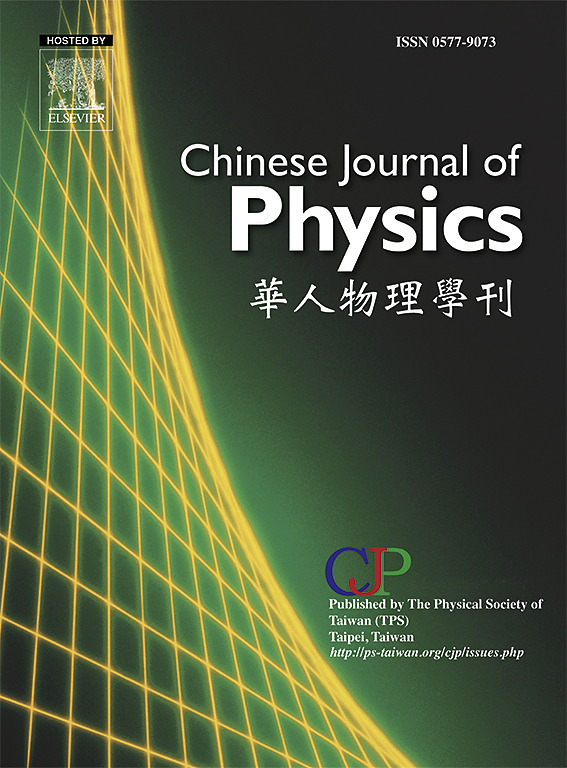Influence of Majorana bound states on conductance characteristics in a T-shaped quantum dot molecule
IF 4.6
2区 物理与天体物理
Q1 PHYSICS, MULTIDISCIPLINARY
引用次数: 0
Abstract
Quantum dots (QDs) in contact with normal-metal and superconducting leads exhibit remarkable electron transmission features. The coupling of Majorana bound states (MBSs) has made them a promising platform for the development of mesoscopic structures. To elaborate on the highly efficient mesoscopic mode, the Andreev conductance in a T-shaped QD molecule coupled with MBSs is theoretically addressed. As the QD-MBS coupling strength λ is focused with respect to the QD energy level in a T-shaped QD molecule, the conductance peak at rises up to 0.5. At , the bonding and antibonding states are captured in the conductance lines as suitable QD-MBS or MBS-MBS coupling survives. Furthermore, for the asymmetric QD-lead coupling case, changing not only induces a transition in zero bias peaks but also suppresses the conductance curve in a low critical bias regime. The present findings can deepen the understanding of the influence of MBSs on electron transport features, highlighting the potential of T-shaped QD molecules coupled with MBSs for additional development and applications in mini-sized devices.

马约拉纳束缚态对t形量子点分子电导特性的影响
与正常金属和超导引线接触的量子点(QDs)表现出显著的电子传输特性。马约拉纳束缚态(Majorana bound state, mbs)的耦合使其成为发展介观结构的一个有希望的平台。为了阐述高效介观模式,从理论上讨论了t形量子点分子与mbs耦合时的Andreev电导。在t形QD分子中,随着QD- mbs耦合强度λ相对于QD能级ε1=ε2=0的集中,εF=0处的电导峰值上升至0.52 e2/h。在ε1=ε2=0时,电导线上捕获了合适的QD-MBS或MBS-MBS耦合的εM。此外,在不对称量子点-引线耦合情况下,改变εM不仅会引起零偏置峰的跃迁,还会抑制低临界偏置区的电导曲线。本研究结果可以加深对mbs对电子传输特性影响的理解,突出了t形量子点分子与mbs耦合在微型器件中的进一步开发和应用潜力。
本文章由计算机程序翻译,如有差异,请以英文原文为准。
求助全文
约1分钟内获得全文
求助全文
来源期刊

Chinese Journal of Physics
物理-物理:综合
CiteScore
8.50
自引率
10.00%
发文量
361
审稿时长
44 days
期刊介绍:
The Chinese Journal of Physics publishes important advances in various branches in physics, including statistical and biophysical physics, condensed matter physics, atomic/molecular physics, optics, particle physics and nuclear physics.
The editors welcome manuscripts on:
-General Physics: Statistical and Quantum Mechanics, etc.-
Gravitation and Astrophysics-
Elementary Particles and Fields-
Nuclear Physics-
Atomic, Molecular, and Optical Physics-
Quantum Information and Quantum Computation-
Fluid Dynamics, Nonlinear Dynamics, Chaos, and Complex Networks-
Plasma and Beam Physics-
Condensed Matter: Structure, etc.-
Condensed Matter: Electronic Properties, etc.-
Polymer, Soft Matter, Biological, and Interdisciplinary Physics.
CJP publishes regular research papers, feature articles and review papers.
 求助内容:
求助内容: 应助结果提醒方式:
应助结果提醒方式:


